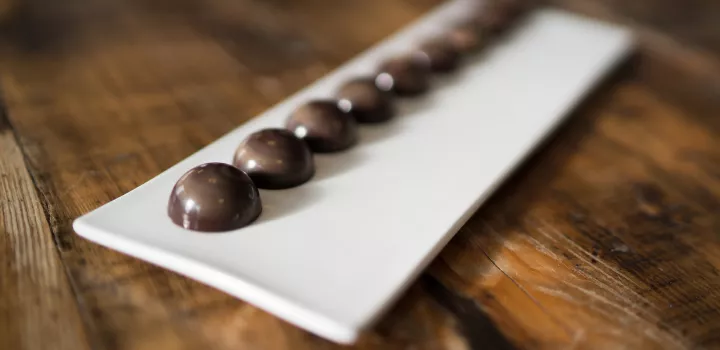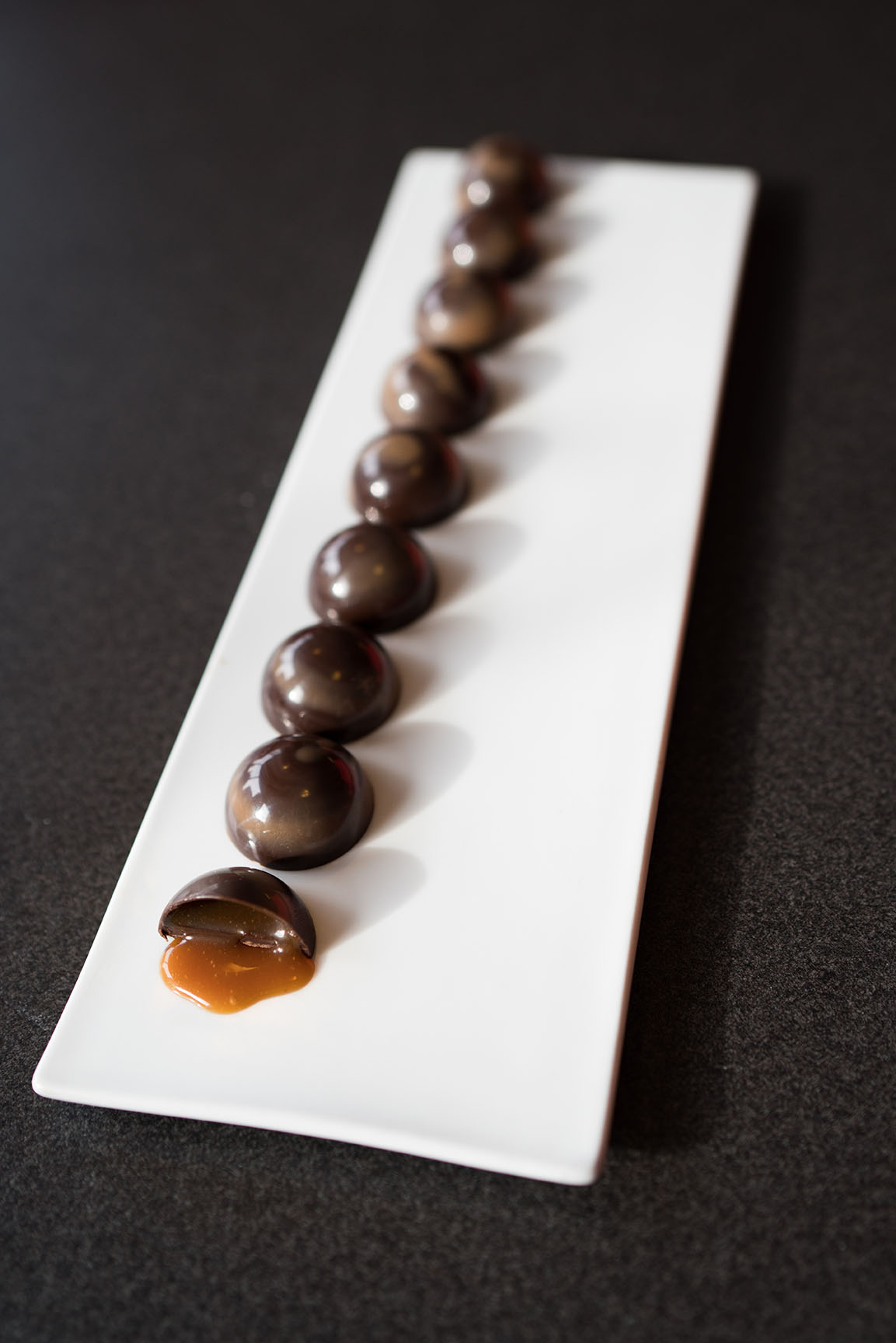
Michael Laiskonis’ Balsamic Caramel Bonbons
ICE's creative director and chocolate lab expert crafts unique treats with depth and complexity.
Institute of Culinary Education chefs have been experimenting with Italy's prized Balsamic Vinegar of Modena. Here's how Creative Director Michael Laiskonis incorporates the authentic ingredient into one of his sweetest specialties: chocolate bonbons.
I love the way in which the depth of balsamic vinegar marries with the bitter complexity of caramel and dark chocolate. The tartness of balsamic combined with the raisin-y sweetness of the aged balsamic creates an effect greater than the sum of the parts.
When possible, I like to amplify the flavors of this caramel by using a fruity chocolate (the red fruit and citrus profile of single-origin Madagascar chocolates work especially well). When cooking the sugar, the level of complexity is proportionate to the degree of caramelization — but cooked too dark, and the result may be too bitter. The vinegars are added at the end of the cooking process to avoid over-reducing. The end result is perfect encapsulation of sweet, salty, bitter and acid!
Recipe
Balsamic Caramel Bonbon
Yields approxinmately 40 bonbons
Ingredients
- 225 grams granulated sugar
- 50 grams water
- 20 grams glucose syrup
- 180 grams heavy cream (36% fat)
- 2 grams salt
- 30 grams butter, unsalted
- 5 grams cocoa butter
- 20 grams Balsamic Vinegar of Modena
- 5 grams Aged Balsamic Vinegar of Modena
Directions

- In a heavy sauce pan, combine the sugar, water and glucose. Cover and cook to a medium amber color. Meanwhile, heat the cream and salt until warm and reserve.
- Remove the caramel from heat and deglaze with the cream. Return to low heat to completely dissolve sugar and continue to cook to 225°F/107°C.
- Remove from heat and emulsify butter, cocoa butter and balsamic vinegars into the caramel base with an immersion blender.
- Allow the caramel to cool to 30˚C/86˚F and deposit the caramel directly into the pre-cast bonbon molds — roughly three-quarters full. Allow a small gap to provide a sealing base and allow the centers to crystallize at room temperature.
- When the centers have fully crystallized, seal the mold with additional tempered chocolate: fill the remaining space of each cavity and scrape away the excess to produce a clean, smooth base and allow to crystallize undisturbed.
- Using a lined half-sheet pan, carefully invert the mold to release the finished bonbons; this may require a slight tap or in some cases, the molds may require a brief chill in order achieve full contraction and release.
Learn more about Balsamic Vinegar of Modena and take a class with Chef Michael in ICE's bean-to-bar chocolate lab.


Precast mold?
Submitted by Bryan on January 16, 2019 7:42am
What does this recipe mean by a "precast bonbon mold"? I'm assuming they mean a bonbon mold that has already been coated in a thin layer of chocolate, but I'm truly unsure.
Thanks! Would love to try this recipe, but I want to make sure I know what I'm doing.
The pre-cast mold is indeed…
Submitted by ICE on January 18, 2019 11:40am
The pre-cast mold is indeed the chocolate shell set into the mold, ready to receive the caramel filling. Learn more from Chef Michael in a hands-on class in the Chocolate Lab.
Add new comment